- Home
- Oliver Sacks
Seeing Voices Page 21
Seeing Voices Read online
Page 21
Critchley, MacDonald. 1939. The Language of Gesture. London: Arnold.
Curtiss, Susan. 1977. Genie: A Psycholinguistic Study of a Modern-Day “Wild Child.” New York: Academic Press.
Damasio, A.; Bellugi, U.; Damasio, H.; Poizner, H.; and van Gilder, J. 1986. “Sign Language Aphasia During Left-Hemisphere Amytal Injection.” Nature 322 (July 24, 1986): 363–365.
de l’Epée, C. M. 1776. Institution des Sourds-Muets par la voie des signes méthodiques. Paris: Nyon. Excerpts were published in English: American Annals of the Deaf, 1861. 13: 8–29.
Eastman, Gilbert. 1980. “From Student to Professional: A Personal Chronicle of Sign Language.” In Sign Language and the Deaf Community, ed. C. Baker and R. Battison. Silver Spring, Md.: National Association of the Deaf.
Edelman, Gerald M. 1987. Neural Darwinism: The Theory of Neuronal Group Selection. New York: Basic Books.
————. 1990. The Remembered Present. New York: Basic Books.
Erting, Carol J.; Prezioso, Carlene; and Hynes, Maureen O’Grady. 1989. “The Interactional Context of Deaf Mother-Infant Communication.” In From Gesture to Language in Hearing and Deaf Children, ed. V. Volterra and C. Erting. New York: Springer Verlag.
Fant, Louie. 1980. “Drama and Poetry in Sign Language: A Personal Reminiscence.” In Sign Language and the Deaf Community, ed. C. Baker and R. Battison. Silver Spring, Md.: National Association of the Deaf.
Fischer, Susan D. 1978. “Sign Languages and Creoles.” In Understanding Language Through Sign Language Research, ed. Patricia Siple. New York: Academic Press.
Fraser, George R. 1976. The Causes of Profound Deafness in Childhood. Baltimore: Johns Hopkins University Press.
Furth, Hans G. 1966. Thinking without Language: Psychological Implications of Deafness. New York: Free Press.
Gallaudet, Edward Miner. 1983. History of the College for the Deaf, 1857–1907. Washington, D.C.: Gallaudet College Press.
Gannon, Jack R. 1981. Deaf Heritage: A Narrative History of Deaf America. Silver Spring, Md.: National Association of the Deaf.
Gee, James Paul, and Goodhart, Wendy. 1988. “ASL and the Biological Capacity for Language.” In Language Learning and Deafness, ed. Michael Strong. New York and Cambridge: Cambridge University Press.
Geertz, Clifford. 1973. The Interpretation of Cultures. New York: Basic Books.
Goldberg, E. 1989. “The Gradiential Approach to Neocortical Functional Organization.” Journal of Clinical and Experimental Neuropsychology 11, no. 4:489–517.
Goldberg, E., and Costa, L. D. 1981. “Hemispheric Differences in the Acquisition of Descriptive Systems.” Brain and Language 14: 144–173.
Goldberg, E.; Vaughan, H. G.; and Gerstman, L. G. 1978. “Nonverbal Descriptive Systems and Hemispheric Asymmetry: Shape Versus Texture Discrimination.” Brain and Language 5: 249–257.
Goldin-Meadow, S., and Feldman, H. 1977. “The Development of Language-like Communication without a Language Model.” Science 197: 401–403.
Grant, Brian, ed. 1987. The Quiet Ear: Deafness in Literature. Preface by Margaret Drabble. London: Andre Deutsch.
Gregory, Richard. 1974. Concepts and Mechanisms of Perception. London: Duckworth.
Groce, Nora Ellen. 1985. Everyone Here Spoke Sign Language: Hereditary Deafness on Martha’s Vineyard. Cambridge, Mass., and London: Harvard University Press.
Head, Henry, 1926. Aphasia and Kindred Disorders of Speech. Cambridge: Cambridge University Press.
Heffner, H. E., and Heffner, R. S. 1988. “Cortical Deafness Cannot Account for ‘Sensory Aphasia’ in Japanese Macaques.” Society for Neuroscience Abstracts, 14(2): 1099.
Helmholtz, Hermann L. F. 1875. The Sensations of Tone, as a Physiological Basis for the Theory of Music, trans. A. J. Ellis. London: Longmans, Green & Co. (Original German edition, 1862.)
Hewes, Gordon. 1974. “Language in Early Hominids.” In Language Origins, ed. W. Stokoe. Silver Spring, Md.: Linstok Press.
Hughlings-Jackson, John. 1915. “Hughlings-Jackson on Aphasia and Kindred Affections of Speech, together with a complete bibliography of his publications on speech and a reprint of some of the more important papers.” Brain XXXVIII: 1–190.
Hull, John M. 1990. Touching the Rock: An Experience of Blindness. London: SPCK.
Hutchins, S.; Poizner, H.; McIntire, M.; Newkirk, D.; and Zimmerman, J. 1986. “A Computerized Written Form of Sign Languages as an Aid to Language Learning.” In Proceedings of the Annual Congress of the Italian Computing Society (AICA), Palermo, Italy, 141–151.
Itard, Jean-Marc. 1932. The Wild Boy of Aveyron, trans. G. and M. Humphrey. New York: Century.
Jacobs, Leo M. 1974. A Deaf Adult Speaks Out. Washington, D.C.: Gallaudet College Press.
James, William. 1893. “Thought Before Language: A Deaf-Mute’s Recollections.” American Annals of the Deaf 38, no. 3: 135–145.
Johnson, Robert E.; Liddell, Scott K.; and Erting, Carol J. 1989. “Unlocking the Curriculum: Principles for Achieving Access in Deaf Education.” Gallaudet Research Institute Working Paper 89–3.
Kisor, Henry. 1990. What’s that Pig Outdoors: A Memoir of Deafness. New York: Hill and Wang.
Kannapell, Barbara. 1980. “Personal Awareness and Advocacy in the Deaf Community.” In Sign Language and the Deaf Community, ed. C. Baker and R. Battison. Silver Spring, Md.: National Association of the Deaf.
Klima, Edward S., and Bellugi, Ursula. 1979. The Signs of Language. Cambridge, Mass.: Harvard University Press.
Knox, Jane E. 1989. “The Changing Face of Soviet Defectology: A Study in Rehabilitation of the Handicapped.” Studies in Soviet Thought 37: 217–236.
Kosslyn, S. M. 1987. “Seeing and Imagining in the Cerebral Hemispheres: A Computational Approach.” Psychological Review 94: 148–175.
Kuschel, R. 1973. “The Silent Inventor: The Creation of a Sign Language by the Only Deaf-mute on a Polynesian Island.” Sign Language Studies 3: 1–27.
Kyle, J. G., and Woll, B. 1985. Sign Language: The Study of Deaf People and Their Language. Cambridge: Cambridge University Press.
Lane, Harlan. 1976. The Wild Boy of Aveyron. Cambridge, Mass.: Harvard University Press.
———. 1984a. When the Mind Hears: A History of the Deaf. New York: Random House.
———, ed. 1984b. The Deaf Experience: Classics in Language and Education, trans. Franklin Philip. Cambridge, Mass., and London: Harvard University Press.
Lenneberg, Eric H. 1967. Biological Foundations of Language. New York: John Wiley & Sons.
Lévy-Bruhl, Lucien. 1966. How Natives Think. New York: Washington Square Press. Originally published in 1910 as Les Fonctions Mentales dans Sociétés Inférieures.
Liddell, Scott. 1980. American Sign Language Syntax. The Hague: Mouton.
Liddell, Scott K., and Johnson, Robert E. 1986. “American Sign Language Compound Formation Processes, Lexicalization, and Phonological Remnants.” Natural Language and Linguistic Theory 4: 445–513.
———. 1989. American Sign Language: The Phonological Basis. Silver Spring, Md.: Linstok Press. In Sign Language Studies 64: 195–277.
Luria, A. R. 1976. Cognitive Development: Its Cultural and Social Foundations. Cambridge, Mass.: Harvard University Press.
Luria, A. R. and Yudovich, F. Ia. 1958. Speech and the Development of Mental Processes in the Child. London: Staples Press.
Mahler, M.; Pine, F.; and Bergman, A. 1975. The Psychological Birth of the Human Infant. New York: Basic Books.
Mann, Edward John. 1836. The Deaf and the Dumb. N.p.: Hitchcock.
Miller, Jonathan. 1976. “The Call of the Wild.” New York Review of Books, September 16.
Myklebust, Helmer R. 1960. The Psychology of Deafness. New York and London: Grune & Stratton.
Neisser, Arden. 1983. The Other Side of Silence. New York: Alfred A. Knopf.
Neville, Helen J. 1988. “Cerebral Organization for Spatial Attention.” In Spatial Cognition: Brain Bases and Development, ed. J. Stiles-Davis, M. Kritchevsky, and U. Bellugi. Hillsdal
e, N.J.: Hove; and London: Lawrence J. Erlbaum.
———. 1989. “Neurobiology of Cognitive and Language Processing: Effects of Early Experience.” In Brain Maturation and Behavioral Development, ed. K. Gibson and A. C. Petersen. Hawthorn, N.Y.: Aldine Gruyter Press.
Neville, H. J., and Bellugi, U. 1978. “Patterns of Cerebral Specialization in Congenitally Deaf Adults: A Preliminary Report.” In Understanding Language Through Sign Language Research, ed. Patricia Siple. New York: Academic Press.
Newkirk, Don. 1987. SignFont Handbook. San Diego: Emerson & Stern Associates.
Padden, Carol. 1980. “The Deaf Community and the Culture of Deaf People.” In Sign Language and the Deaf Community, ed. C. Baker and R. Battison. Silver Spring, Md.: National Association of the Deaf.
Padden, Carol, and Humphries, Tom. 1988. Deaf in America: Voices from a Culture. Cambridge, Mass., and London: Harvard University Press.
Penrose, Roger. 1989. The Emperor’s New Mind. New York: Oxford University Press.
Petitto, Laura A., and Bellugi, Ursula. 1988. “Spatial Cognition and Brain Organization: Clues from the Acquisition of a Language in Space.” In Spatial Cognition: Brain Bases and Development, ed. J. Stiles-Davis, M. Kritchevsky, and U. Bellugi. Hillsdale, N.J.: Hove; and London: Lawrence J. Erlbaum.
Pinna, P.; Rampelli, L.; Rossini, P.; and Volterra, V. 1990. “Written and Unwritten Records from a Residential School in Rome.” Sign Language Studies 67:127–140.
Poizner, Howard; Klima, Edward S.; and Bellugi, Ursula. 1987. What the Hands Reveal about the Brain. Cambridge, Mass., and London: MIT Press.
Rapin, Isabelle. 1979. “Effects of Early Blindness and Deafness on Cognition.” In Congenital and Acquired Cognitive Disorders, ed. Robert Katzman. New York: Raven Press.
———. 1986. “Helping Deaf Children Acquire Language: Lessons from the Past.” International Journal of Pediatric Otorhinolaryngology 11: 213–223.
Restak, Richard M. 1988. The Mind. New York: Bantam Books.
Rymer, Russ. 1988. “Signs of Fluency.” The Sciences, September 1988: 5–7.
Sacks, Oliver. 1985. The Man Who Mistook His Wife for a Hat. New York: Summit Books.
Savage-Rumbaugh, E. S. 1986. Ape Language: From Conditioned Response to Symbol. New York: Columbia University Press.
Schaller, Susan. 1991. A Man without Words. New York: Summit Books.
Schein, Jerome D. 1984. Speaking the Language of Sign: The Art and Science of Signing. Garden City, N.Y.: Doubleday.
———. 1989. At Home Among Strangers. Washington, D.C.: Gallaudet University Press.
Schlesinger, Hilde. 1987. “Dialogue in Many Worlds: Adolescents and Adults—Hearing and Deaf.” In Innovations in the Habilitation and
Rehabilitation of Deaf Adolescents, ed. Glenn B. Anderson and Douglas Watson. Arkansas Research and Training Center.
———. 1988. “Questions and Answers in the Development of Deaf Children.” In Language Learning and Deafness, ed. Michael Strong. Cambridge and New York: Cambridge University Press.
Schlesinger, Hilde S., and Meadow, Kathryn P. 1972. Sound and Sign: Childhood Deafness and Mental Health. Berkeley, Los Angeles, London: University of California Press.
Shattuck, Roger. 1987. The Forbidden Experiment: The Story of the Wild Boy of Aveyron. New York: Farrar, Straus & Giroux.
Shengold, Leonard. 1988. Halo in the Sky: Observations on Anality and Defense. New York: Guilford Press.
Stern, Daniel N. 1985. The Interpersonal World of the Infant. New York: Basic Books.
Stokoe, William C. 1960. Sign Language Structure. Reissued, Silver Spring, Md.: Linstok Press.
———. 1974. “Motor Signs as the First Form of Language.” In Language Origins, ed. W. Stokoe. Silver Spring, Md.: Linstok Press.
———. 1979. “Syntactic Dimensionality: Language in Four Dimensions.” Presented at the New York Academy of Sciences, November 1979.
———. 1980. Afterword. In Sign Language and the Deaf Community, ed. C. Baker and R. Battison, Silver Spring, Md.: National Association of the Deaf.
———. 1987. “Sign Writing Systems.” In Gallaudet Encyclopedia of Deaf People and Deafness, vol. 3, ed. John Van Cleve. New York: McGraw-Hill.
Stokoe, William C.; Casterline, Dorothy C.; and Croneberg, Carl G. 1976. A Dictionary of American Sign Language on Linguistic Principles. Revised ed., Silver Spring, Md.: Linstok Press.
Strong, Michael. 1988. “A Bilingual Approach to the Education of Young Deaf Children: ASL and English.” In Language Learning and Deafness, ed. M. Strong. Cambridge and New York: Cambridge University Press.
Supalla, Samuel J. In Press. “Manually Coded English: The Modality Question in Signed Language Development.” In Theoretical Issues in Sign Language Research, vol. 2: Acquisition, ed. Patricia Siple. Chicago: University of Chicago Press.
Supalla, Ted, and Newport, Elissa. 1978. “How Many Seats in a Chair?: The Derivation of Nouns and Verbs in American Sign Language.” In Understanding Language through Sign Language Research, ed. Patricia Siple. New York: Academic Press.
Sur, Mriganka; Garraghty, Preston E.; and Roe, Anna W. 1988. “Experimentally Induced Visual Projections into Auditory Thalamus and Cortex,” Science 242: 1437–1441.
Tronick, E.; Brazelton, T. B.; and Als, H. M. 1978. “The Structure of Face-to-face Interaction and Its Developmental Function.” Sign Language Studies 18: 1–16.
Tylor, E. B. 1874. Researches into the Early History of Mankind. London: Murray.
Van Cleve, John V., ed. 1987. Gallaudet Encyclopedia of Deaf People and Deafness. New York: McGraw-Hill.
von Feuerbach, Anselm. 1834. Caspar Hauser: An account of an individual kept in a dungeon, separated from all communication with the world, from early childhood to about the age of seventeen. London: Simpkin & Marshall. Original German edition (1832) published as Kaspar Hauser.
Vygotsky, L. S. 1962. Thought and Language, ed. and trans. by Eugenia Hanfmann and Gertrude Vahar. Cambridge, Mass., and New York: MIT Press and John Wiley & Sons. Original Russian edition published in 1934.
Vygotsky, L. S. 1991. The Collected Works of L. S. Vygotsky, vol. II, Problems of Abnormal Psychology and Learning Disabilities: The Fundamentals of Defectology (Russian title: Principles of Defectology), ed. R. Rieber and A. S. Carton, trans. J. E. Knox and C. Stevens. New York: Plenum Press.
Walker, Lou Ann. 1986. A Loss for Words: The Story of Deafness in a Family. New York: Harper & Row.
Washabaugh, William. 1986. Five Fingers for Survival. Ann Arbor: Karoma.
Whorf, Benjamin Lee. 1956. Language, Thought, and Reality. Cambridge: Technology Press.
Winefield, Richard. 1987. Never the Twain Shall Meet: Bell, Gallaudet and the Communications Debate. Washington, D.C.: Gallaudet University Press.
Winnicott, D. W. 1965. The Maturational Process and the Facilitating Environment. New York: International Universities Press.
Wittgenstein, Ludwig. 1953. Philosophical Investigations. London: Blackwell.
Wood, David; Wood, Heather; Griffiths, Amanda; and Howarth, Ian. 1986. Teaching and Talking with Deaf Children. Chichester and New York: John Wiley & Sons.
Woodward, James. 1978. “Historical Bases of American Sign Language.” In Understanding Language Through Sign Language Research, ed. Patricia Siple. New York: Academic Press.
———. 1982. How You Gonna Get to Heaven if You Can’t Talk with Jesus: On Depathologizing Deafness. Silver Spring, Md.: T. J. Publishers.
Wright, David. 1969. Deafness. New York: Stein and Day. (Reprinted in 1990 by Faber and Faber, London.)
Zaidel, E. 1981. “Lexical Organization in the Right Hemisphere.” In Cerebral Correlates of Conscious Experience, ed. P. Buser and A. Rougeul-Buser. Amsterdam: Elsevier.
SELECTED BIBLIOGRAPHY
HISTORY OF THE DEAF
The fullest history of deaf people, from their liberation in the 1750s to the (deadly) Milan conference of 1880, is given in Harlan Lane’s When the Mind Hears: A History of the Deaf.
&n
bsp; Excerpts from autobiographies of the first literate deaf and their teachers, during this period, are to be found in Harlan Lane, ed., The Deaf Experience: Classics in Language and Education, translated by Franklin Philip.
A pleasant, informal history of the deaf, full of personal vignettes and fascinating illustrations, is provided by Jack R. Gannon in Deaf Heritage: A Narrative History of Deaf America.
Edward Gallaudet himself wrote a half-autobiographical history of Gallaudet College, History of the College for the Deaf, 1857–1907.
A remarkably informative and lengthy article, under the heading of “Deaf and Dumb,” may be found in the “scholars’ ” (11th) edition of the Encyclopedia Britannica.
ISLANDS OF THE DEAF
An extremely vivid, poignant account of the unique Martha’s Vineyard community is Nora Ellen Groce’s Everyone Here Spoke Sign Language: Hereditary Deafness on Martha’s Vineyard.
BIOGRAPHIES AND AUTO BIOGRAPHIES
David Wright’s Deafness is the most beautiful account of acquired deafness known to me.
A more recent book by Lou Ann Walker, A Loss for Words: The Story of Deafness in a Family, draws a powerful picture of life as a hearing child of deaf parents.
The Quiet Ear: Deafness in Literature, compiled by Brian Grant, with a preface by Margaret Drabble, is an extremely readable and varied anthology of short pieces by or about deaf people.
A vivid account of a rich, creative life is Lessons in Laughter by the eminent deaf actor Bernard Bragg. Interestingly, this was not written (though Bragg, a Shakespearean actor, is intensely literate), but signed (for Sign, not English, is Bragg’s first language) and then translated into English.
Another fascinating account of a full and creative life is What’s that Pig Outdoors, by the book editor of the Chicago Sun-Times, Henry Kisor. Kisor lost his hearing at three and a half, when he had already acquired speech and language—he does not sign, but lip-reads and speaks. Kisor does not identify himself as culturally Deaf, and his life, unlike Bernard Bragg’s, has been spent entirely in the hearing world.

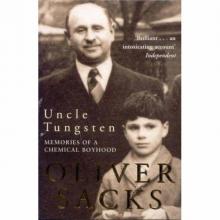 Uncle Tungsten
Uncle Tungsten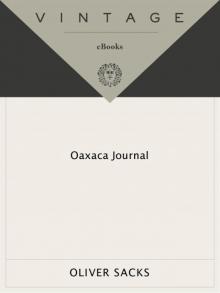 Oaxaca Journal
Oaxaca Journal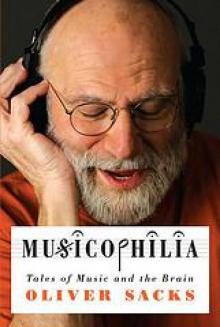 Musicophilia
Musicophilia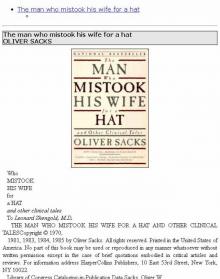 The man who mistook his wife for a hat
The man who mistook his wife for a hat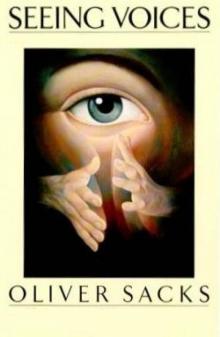 1989 - Seeing Voices
1989 - Seeing Voices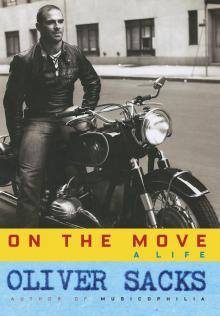 On the Move: A Life
On the Move: A Life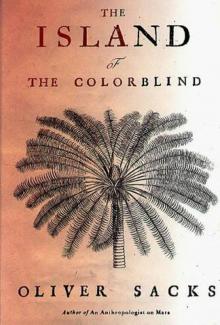 1996 - The Island of the Colorblind
1996 - The Island of the Colorblind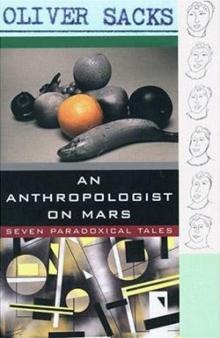 An Anthropologist on Mars: Seven Paradoxical Tales
An Anthropologist on Mars: Seven Paradoxical Tales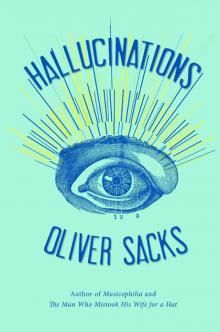 Hallucinations
Hallucinations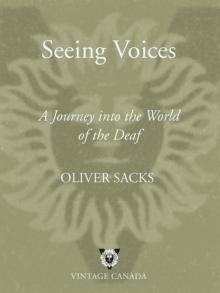 Seeing Voices
Seeing Voices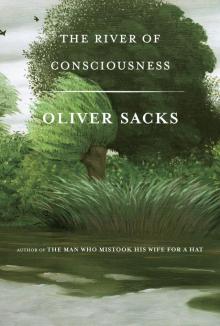 The River of Consciousness
The River of Consciousness Vintage Sacks
Vintage Sacks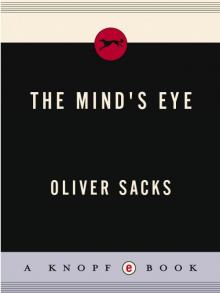 The Mind's Eye
The Mind's Eye Everything in Its Place
Everything in Its Place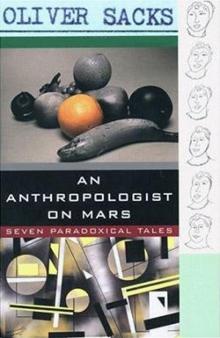 An Anthropologist on Mars (1995)
An Anthropologist on Mars (1995)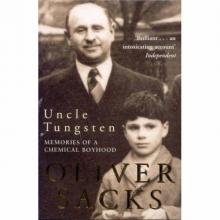 Uncle Tungsten: Memories of a Chemical Boyhood (2001)
Uncle Tungsten: Memories of a Chemical Boyhood (2001)